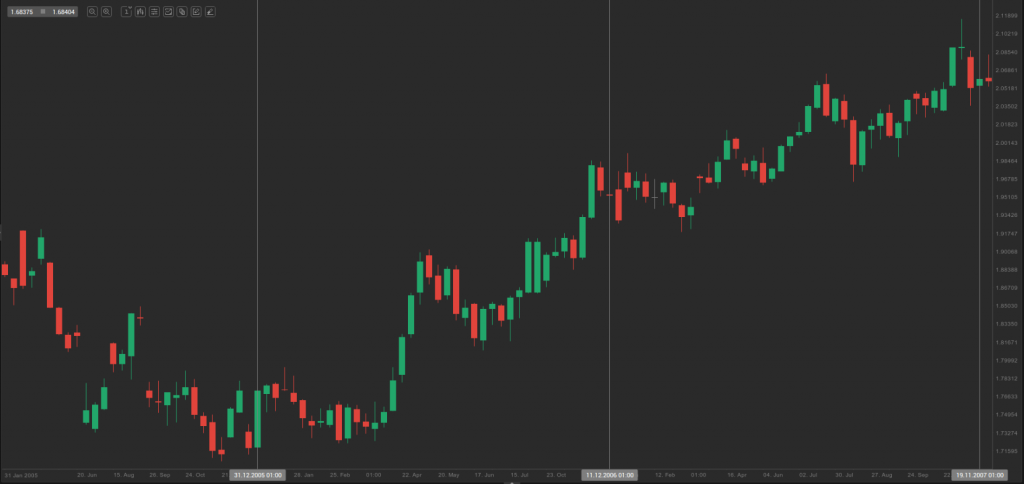Profile of United Kingdoms pound – important facts
This lesson will cover the following
- Important facts regarding United Kingdoms pound
- Liquidity
- Energy prices correlation
Important facts regarding United Kingdoms pound
First of all, GBP/USD is among the most liquid currency pairs worldwide, while over 6% of all trading in the Foreign Exchange Market includes the sterling either as a base or as a counter currency. Among the reasons behind pairs liquidity is that UK capital markets are very well developed. Foreign investors in search of opportunities outside the United States relocate their money in the UK. In this case they will need to sell their domestic currency and purchase British pounds.
Second, UKs currency, known also as “Cable”, used to be loaded with speculators. Interest rates in the United Kingdom used to be among the highest in all developed countries (with the exception of Australia and New Zealand, where rates were and still are higher, but capital markets are not developed to the extent UK markets are). Due to this fact a lot of investors, who already are positioned or intend to enter new carry trade positions often use the pound as the lending currency and will purchase it, while selling currencies such as the yen, the franc or the US dollar. When we say a carry trade, we mean lending or purchasing a currency with a higher interest rate and borrowing or selling a currency with a lower interest rate. Almost a decade ago, carry trades became very popular and this led to increased demand for the sterling. This can be observed on the weekly chart of GBP/USD below.
Third, interest rate differentials between UK government bonds (known also as gilts) and US bonds and differentials between UK gilts and German bonds are often closely watched by traders in the foreign exchange market. Gilts versus US bonds can be indicative of GBP/USD flows and gilts versus German bonds can be indicative of EUR/GBP flows. Interest rate differentials show the premium yield, which UK fixed income assets offer over such assets in the United States and the Euro zone. Rate differentials signal potential capital flow or movement in the currency markets, because international investors are always in pursuit of assets, offering the highest yields.
Fourth, any statements, remarks by UK policymakers or surveys focusing on the euro usually have an impact on the foreign exchange market. Signals for adoption of the euro usually cause selling pressure on the sterling, while continuing opposition to such an idea usually provides support to the pound. In order for the sterling to become in line with the euro, interest rates in the UK would have to drop. These lower interest rates would urge market players to abandon their carry trades, respectively, they would sell the pound. Crosses such as GBP/USD would also lose value, because the adoption of the euro will probably pose a number of uncertainties.
Fifth, the pound tends to correlate positively with prices of energy products. This is due to the fact, that energy production industry accounts for over 10% of nations Gross Domestic Product. As a number of countries in the European Union import oil from the UK, higher prices of this commodity will cause the countries to obtain more pounds (which will increase the value of the GBP) in order to finance this purchase.
